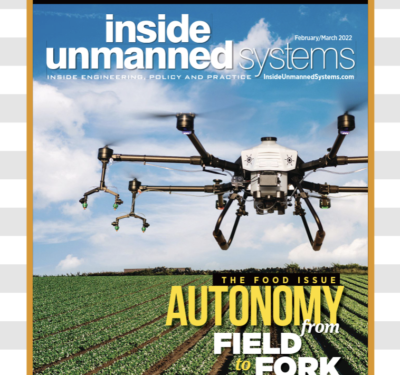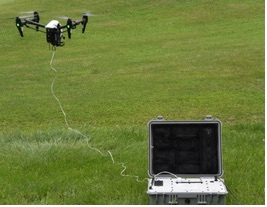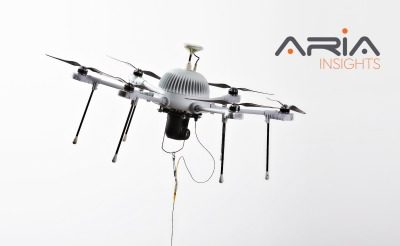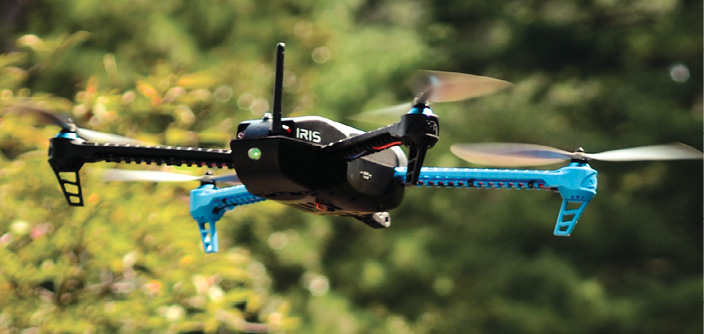
Image courtesy of Mary (Missy) Cummings, Duke University.
The National Robotics Initiative (NRI), which is part of the National Science Foundation, plays a significant role in the advancement of human-robotic systems—that is robotic technology that helps humans perform tasks. Since its inception in 2012, NRI has provided about $120 million in grants to robotics researchers. In 2014, the program announced $31.5 million in new awards for 52 research efforts, each selected for its intellectual merit and broader impact on human-robot interaction.
One NRI grant, for example, will advance a robotic treadmill designed to provide patients with lower spinal cord injuries with a realistic walking experience. Another will further work on a prosthetic robot hand meant to improve rehabilitation for amputees and persons with hand-related disabilities. Other work leverages recent advances in 3D-printing technology for things like soft robotic braces that can be customized for patients undergoing physical rehabilitation.
Some grants support people in their jobs. Bat-like robots, now under development could extend a construction manager’s ability to monitor a building site. Underwater robots will be equipped to perform security sweeps in harbors and oil fields. Today’s robots can walk, talk, swim and fly to help people meet many needs.
These and other NRI projects, as well as programs such as the DARPA Robotics Challenge are fundamentally changing the way humans interact with robots, said Paul Oh, the director of the Drones and Autonomous Systems Lab at the University of Nevada, Las Vegas (UNLV). He believes those changes will begin to coalesce in 2015, fueling even more activity.
“I see a lot of aggregation of knowledge and shared experience this year that will drive significant advancement,” said Oh, an ASME Fellow.
Mary (Missy) Cummings, an associate professor at Duke University and director of Duke’s Humans and Autonomy Laboratory, agrees.
“I see two big areas of focus and advancement in 2015,” she told Inside Unmanned Systems. “Agriculture is one. I am already seeing a spike in insurance companies’ interest—both for figuring out how to insure such vehicles (or in response to accidents caused by such vehicles).
“The other big growth area,” she said, “is the use of such robotics to do inspections in the aftermath of a manmade or natural disaster.”
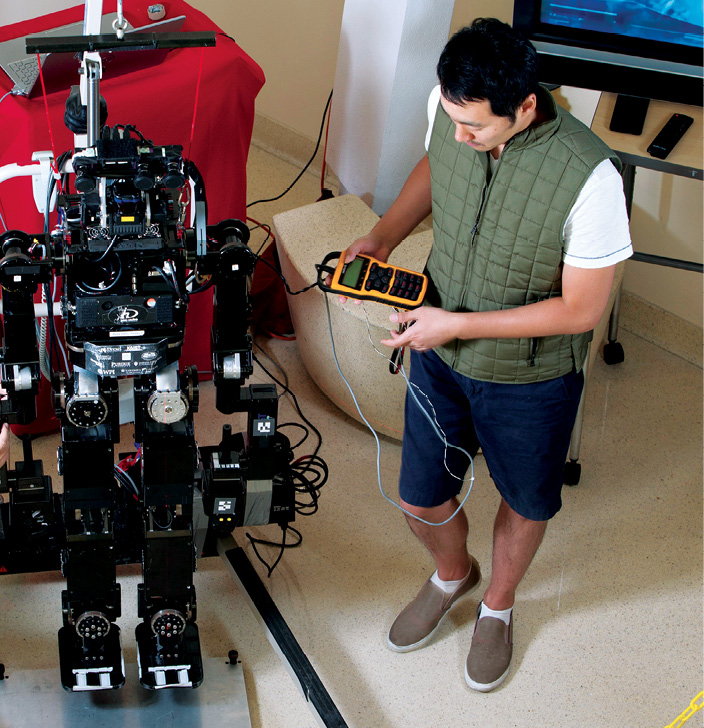
UNLV students build a disaster response robot that can turn a valve, climb a ladder and move over rugged terrain. Photo courtesy of UNLV Photo Services
On the Ground/In the Air
As part of an NRI grant, robotics researchers at Rutgers University in New Jersey and Texas A&M University (TAMU) in Texas are building on recent advances in robotics and automation technologies to develop a minimally invasive, robotic, non-destructive evaluation and rehabilitation robot for bridge decks. Called Bridge-MINDER, the robot is expected to reduce bridge maintenance cost and mitigate public inconvenience caused by bridge closures.
A functioning prototype is already being tested in the field. The Bridge-MINDER prototype will have three main capabilities: 1) automatic in-traffic bridge surface and subsurface scanning, 2) non-destructive repairing, and 3) autonomous traffic management for bridge inspection and repair. Rutgers recently completed some early field work and demonstration of the robot and expects to have a fully functioning robot by 2017 or sooner.
Roboticists at Duke, under the direction of Cummings, a former fighter pilot, are drawn to the potential of unmanned aerial systems. “I am really excited that there seems to be no end to the new applications that people are dreaming up for drones,” she said. “Consider France’s recent announcement to make drones part of its national mail delivery service.”
Cummings recently shifted her small drone research from military applications to focus on wildlife conservation. Because she sees a huge need to make this technology accessible and usable by people from all walks of life and all education levels, her team will spend considerable time working on making drones easier to control. On a more global level, she and her team are developing new air traffic control paradigms for high density, low altitude air traffic control architectures for drones, specifically for the future of drone delivery.
Exploring New Partnerships
For robotics veterans such as Greg Chirikjian, co-leader of NRI, today’s robotic trends are a sign of things to come.
“I’ve worked in robotics for 20 years,” he said, “so I’m always impressed with how roboticists find a way to integrate many different engineering and science specialties. Any one solution might require mechanical and electrical expertise, computer sciences, physics or other specific areas of expertise. The highly integrative nature of robotics requires that a roboticist is truly a jack of all trades.”
NRI’s influence on the advancement of robots will certainly grow in 2015, with the addition of DARPA and the Department of Defense as partners.
Chirikjian believes the participation of these new organizations will expand the scope of the NRI program, which is focused on co-robotics, robots working to serve people or in proximity with people.
“We are about humans and robots working together and in the service of humans,” he concludes. “This year promises to deliver some impressive advances.”



